OTRK "Iskander": everything is as we warned
The next object of close consideration for us will be the Iskander operational-tactical missile system. For about 15 years, the complex has been waiting in the wings, because what's the point in praising weaponsif it was not used for its intended purpose? And here it did not disappoint.
Indeed, the active use of new weapons provides a very large ground for analysis and reflection for those against whom these new items can be used tomorrow. There is something to think about in Poland, the Baltics and other places where today they demonstrate an unnecessarily negative attitude towards Russia.
A bit of history
And it all began ... It all began at the end of November 1939, when the ministry aviation In Germany, the development of Fritz Gosslau from Argus Motoren was submitted for consideration. The proposal contained a project for a remote-controlled aircraft capable of carrying a load of 1000 kg for a distance of 500 km. This is how the prototype appeared, from which the V-1 came out, and in 1942 the V-2, the brainchild of Wernher von Braun, was launched for the first time.
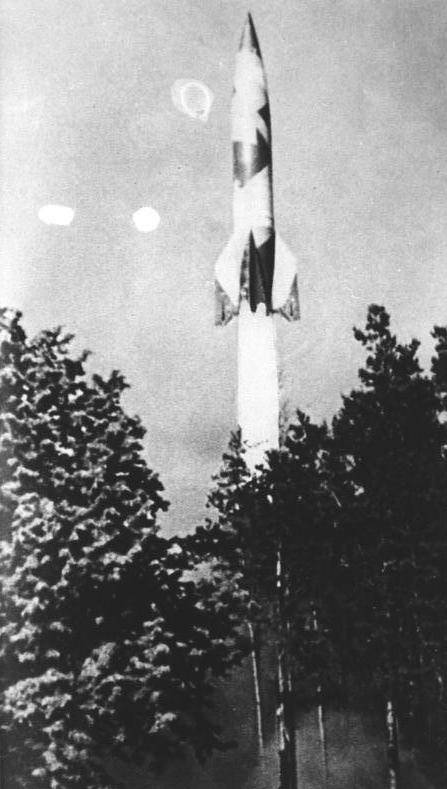
This is how the first cruise and first ballistic missiles were born. And both have a place in our story, both winged and ballistic.
The V-2 rocket was single-stage, had a liquid-propellant rocket engine, was launched vertically, had a prototype control computer (software mechanism) with a gyroscopic control system. Cruise flight speed is about 6 km/h for a range of more than 000 km with a trajectory altitude of 300-80 km. The warhead consisted of 90 kg of ammotol (a mixture of ammonium nitrate and TNT 800/50).
The idea of quickly delivering almost a ton of explosives to a decent distance without the danger of losing the crew liked everyone in the Reich.
By the way, "V-2" became the first in the world stories a rocket that made a suborbital space flight, reaching an altitude of 1944 km in 188. It is not surprising that after the war, the V-2 became the prototype for the development of the first ballistic missiles in many countries, including the USSR.
So, in fact, Iskander and V-2 are very close relatives. They even look alike. And the development of technology made it possible to place a relatively small missile on an automobile or tracked chassis, making a new move in the development of tactical missile weapons. And, despite the intercontinental ballistic missiles that conquered the world, tactical systems also developed.
Tactical missiles have found their niche in the modern world. Instead of simply demolishing territories “to zero”, tactical missiles (even with nuclear charges up to 50 kt) are capable of destroying railway junctions, airfields, command and communication centers, power plants, air defense systems, bridges and warehouses.
Possible deviations from the aiming point are very easily compensated for by a nuclear charge with its broad soul.
In general, the world realized the need and validity of the development of tactical missiles, and those who could build - began to do it very actively.
The evolution of Soviet missiles is known to us. It all started in 1955 with the adoption of the R-11 tactical missile, or "Squall" ("Scud-A") by name in NATO.
In 1962, the R-11 missile ("Scud-B") replaced the R-17.
Both rockets were accelerated with the help of a liquid-propellant rocket engine and were controlled only at the initial stage of the flight, while the rocket engine was running. After the end of the acceleration section, the missile warhead fell freely, without any adjustment and control.
In 1975, the "Point", created by the great designer Sergei Pavlovich Invincible, entered service.
This complex used a 9M79 rocket with a solid fuel engine and small rudders in the middle of the hull.
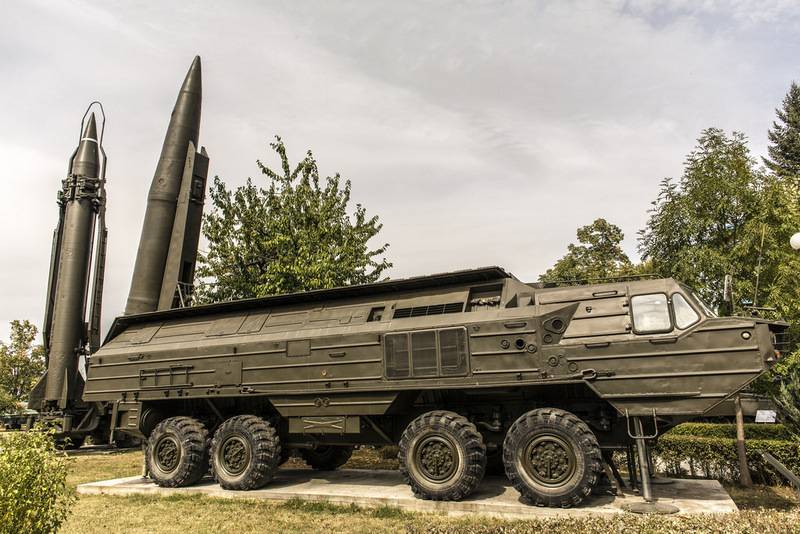
In 1980, the Tochka was replaced by the Oka, the 9K714 rocket was also solid-propellant, but had lattice rudders in the stern for control. "Oka" served from 1980 to 2003.
And in 2006, the Iskander operational-tactical complex was adopted.
The complex caused a lot of controversy and rumors, mainly the declared characteristics were discussed, many of which were questioned. After 16 years in the history of distrust in the capabilities of the Iskander, they began to put an end to it. Fat dots. With large funnels.
Ballistic or aeroballistic?
Yes, today there are many subspecies of rockets, judging by the flight path. There are ballistic, aeroballistic, and quasi-ballistic ones have also appeared. More precisely, it appeared, because "quasi" is just about the "Dagger", which is a very specific experiment. Now work is underway to cross the "Dagger" and "Iskander" and then in general the result will be a terrible mutant that drives ballistic air defense computers crazy.
In order to appreciate the Iskander, one must generally understand the principle of its flight.
Ballistic trajectory is the trajectory of a bullet, oddly enough. Or a stone from a catapult. That is, the projectile is fired at an angle to the horizon and its flight takes place under the influence of gravity along the entire trajectory. As the projectile loses speed, the nose will drop steeper towards the surface, because both gravity and air friction will slow its flight. Not only range will suffer, but also accuracy. Therefore, ballistic missiles are fired not along a gentle trajectory, but along a parabola with a vertex at the highest point of the trajectory.
For Iskander, this is about 50 km. Such an average height, it is possible to accelerate in the already almost airless space of the upper part of the stratosphere and not worry about the satellites and the ISS. Yes, the range with such a trajectory suffers, but the speed increases, which makes it difficult to intercept. In addition, up there, you can still scatter decoys, adding work to enemy air defense systems.
Plus, in the section after acceleration, when the rocket picks up tremendous speed and begins to descend, you can very effectively control it with the help of rudders. Due to the high speed, the rudders do not have to be made large, everything will be done by the flow of incoming air, which, pressing on the rudders, will turn the rocket body to the oncoming flow at the right angle.
And here comes the time for the aerodynamic component. For the air that presses on the rudders, at supersonic speed, even at a small angle of attack (1-2 degrees) creates a lifting force that can be directed not only upwards, but also to the sides. This means that the rocket will maneuver quite normally, bending the flight path.
You can set the trajectory so that it becomes semi-ballistic. That is, the acceleration section to the top point, and then the trajectory is maximally stretched in the descent section precisely due to the implementation of lift at high speeds due to the aerodynamics of the rocket.
Thus, the trajectory of the rocket on the one hand will be semi-ballistic, since the ballistic curve is preserved with an ascent section, an upper point and a descending section. On the other hand, semi-aerodynamic, since in the atmospheric phase of the flight the rocket will use aerodynamic lift to slow down the descent and increase the range.
The Iskander combines both principles, because it is believed that the rocket flies along an aeroballistic trajectory. The ballistic part of the trajectory gives a greater range and the possibility of using decoys of various types in exoatmospheric flight. The atmospheric part makes it possible to constantly maneuver, albeit at the expense of a loss of speed.
At the end of the active acceleration section, the Iskander flies at a speed of about 2000 m / s. The maximum speed at the end of the descent section at the boundary of the atmosphere is 2600 m/s. The speed near the target is 800 m / s.
Where does the speed go, of course. It takes to overcome air resistance when maneuvering, but increases the accuracy of warhead delivery. So the usually given “working” height of the Iskander at 50 km does not at all show what the trajectory is in reality. It can be a steep ballistic arc, and gentle glide from a height of 50 kilometers. But this is correct.
The main thing is that the Iskander has the ability to maneuver in any part of the flight path. Where due to the engine, where due to the rudders. Plus a set of dropable decoys (Iskander-M) and electronic warfare modules.
In order for the rocket to successfully overcome the entire trajectory, an engine is needed. It is he who provides both the speed and range of the rocket.
Engine
The Iskander engine runs on solid fuel. This is more modern than LRE, since even on the ground it eliminates the need to transport and refuel the rocket with various liquids, which require a bunch of specialized tanks to move. Solid fuel provides both faster refueling and faster launch, even if it comes at the cost of less thrust.
Difficulties also take place, since solid fuel should not lose density during storage, compress or lose uniformity.
What the Iskander is filled with, of course, is under the heading. But one can guess by looking at those types of solid rocket fuel that are not classified.
Typically, finely dispersed aluminum and elastic hydrocarbons are used as fuel. The oxidizing agent is ammonium perchlorate NH4ClO4. Four oxygen atoms from an ammonium perchlorate molecule are easily released when heated, and aluminum burns just fine in them. At the same time, the combustion temperature is about 3300 degrees Celsius. And in this environment, the following components burn perfectly: nitrile butadiene rubber or hydrocarbon polybutadiene acrylonitrile.
There are still many different chemistry in any solid fuel, plasticizers so that the fuel mass is malleable and can generally be filled into a rocket, epoxy hardeners, oxidation inhibitors, combustion catalysts, fuel phlegmatizers, which make it insensitive to friction and temperatures.
The finished propellant has approximately the following composition:
- 69,6% ammonium perchlorate NH4ClO4;
- 16% metallic aluminum;
- 12% polybutadiene acrylonitrile;
- 1,96% epoxy hardener;
- 0,4% iron as a catalyst.
Physically, it resembles a pencil eraser. But it burns more than excellently, for a very short time. During this time, the rocket travels about 15 kilometers. The engine provides acceleration to the rocket, which flies by inertia the entire further path. This indicates a very decent engine thrust.
Design
Structurally, the Iskander consists of two parts. The rear is cylindrical, in which the engine and fuel compartment are located, and the front is conical with a fairing, where the warhead, decoys, control unit, rudder drives, and so on are located. A lighter forefoot allows for a rear center of pressure. CD is a point on the longitudinal axis of the rocket through which the resultant of all aerodynamic forces passes.
The farther from the center of mass the center of pressure is shifted, the more stable the rocket is in flight in the air.
Aerodynamic rudders are made of heat-resistant materials, since when flying at supersonic speeds above 7M, they are heated up to 1000 degrees by friction with air. The body of the rocket is covered with a heat-shielding material, which simultaneously plays the role of a radar absorber. The fact that the gas-dynamic rudders (four pieces are located in the outflowing gas jet in the engine nozzle) are made heat-resistant is not worth saying. They control the movement of the rocket in the area of active acceleration and in rarefied air. This is how the progenitors of the V-2 operated.
Management system
The mind of the control system, which must deliver the warhead to a specified point in space, is an inertial measuring unit. It is based on three accelerometers that continuously measure acceleration along three spatial axes. Next up are the integrators. The first line of integrators turns the acceleration indicators into the speed of movement along the three axes, and the second line into coordinates.
Thus, the inertial unit "knows" the speed, direction of the rocket and the current coordinates. The angular displacement of the rocket is calculated by receiving data from the gyroscopes.
The control system compares the data obtained by measurements and entered before the flight by software and determines the amount of discrepancy in each individual second of the flight. Based on the discrepancies, a command is issued to the gas-dynamic and/or aerodynamic rudders to bring the rocket into the calculated position.
Maneuvering
As already mentioned, the Iskander is able to maneuver throughout its flight. This makes interception a very problematic task, since if there is a threat of interception, then the Iskander is capable of carrying out the so-called small-scale maneuvering throughout the entire flight. That is, a number of small deviations that do not eat much speed and do not affect the overall combat course.
The greater the overload during maneuvering, the more difficult it is to intercept, since the anti-missile also needs to be able to withstand overloads up to 30-40g. And this is problematic both for the rocket body and for the computing unit.
In general, an anti-missile must "see" the target for effective destruction. And the closer the anti-missile is to the target, the more difficult it is, because the target constantly leaves the field of view of the anti-missile. It is clear that the entire interception is based on the calculation of a certain point at which the Iskander and the anti-missile should meet. But if the Iskander flies at a speed of 6-7M and at the same time constantly maneuvers with overloads up to 30g, then the anti-missile must also maneuver in order to keep the target in lockdown.
If the overload exceeds the limit values for the anti-missile, then the PR will simply collapse and will not be able to complete its task. And if the PR cannot keep the constantly twitching target in the capture field, then the guidance process will simply stop and the task of anti-missile maneuvering will be completed.
How this is implemented is also very interesting. As such, there is no algorithm, there is a random number generator. The control system calculates a certain point, it is quite possible, the aiming point. This point is the center of a circle of a certain diameter. The system, using a random number generator, selects a certain point within this circle and puts a “cross” of the sight there, respectively, directing the rocket there. As soon as the missile is at this point, the next point is selected and the missile is redirected.
It turns out that the rocket "dances" around the aiming point, without deviating strongly from it. But not on a perfect course either. For an anti-missile, it will be very difficult to calculate the meeting point. The RNG will select a random point each time, so it will be very difficult to predict in which direction the rocket will deviate in the next period of time.
Of course, this is a very simplified possible scheme for the operation of the Iskander logical blocks, in fact, everything is much more complicated, although the above scheme gives an understanding of how it works in principle.
And on the final leg of the flight, you can no longer maneuver. High speed and almost vertical dive on the target already make it very difficult to intercept the missile. And the presence of an optical seeker simplifies the correction of the flight path in the final section.
The latest improvements of the Iskander make it possible to equip the rocket with an optical seeker. It is installed instead of a pointed fairing and increases the hit accuracy to a deviation of 5-7 meters.
The 9E436 optical seeker for the Iskander OTRK operates according to the following principle: a picture of the area around the target, previously taken by a satellite, aircraft or UAV, is loaded into the memory of the missile control unit. When approaching the target area, the missile recognizes the area around the target using an optical seeker and compares it with a memory map.
It is clear that the picture and the image from the GOS will differ, since they may have different shooting angles. Starting from the moment of operation of the OGSN, the control unit will constantly compare the image from the image with the image received from the OGSN and calculate the degree of correlation (coincidence) of the stored and visible images.
As the target approaches, the terrain is visible more and more correctly, the correlation of the two images grows, reaching a maximum directly at the target. The block can predict which change in the direction of the missile's flight can increase the degree of coincidence of the pictures, and hence the accuracy of the hit.
It looks like the work of the Javelin ATGM, only several tens of times more complicated.
The control unit will constantly solve the problem of correcting the course of the rocket in order to achieve the maximum match between the visible image and the standard in memory. The result will be an accurate hit on the target.
Optical seeker 9E436 can be used at relatively low speeds (if 700-800 m / s is a low speed) in the target area, since then a plasma ionization layer is not formed, which blinds the seeker.
If the Iskander is used at speeds above 1000 m / s, then the 9B918 radar seeker is used, which is not so susceptible to atmospheric influences.
This guidance method is called correlation-extreme and is used today on all cruise missiles. And for the first time it was used by the Americans on their Pershings back in the 80s of the last century.
Warhead
The Iskander warhead weighs 480 kilograms and has several equipment options.
1. Cluster warhead with 54 fragmentation submunitions of non-contact detonation, triggered at a height of about 10 m above the ground. Undermining produces a remote fuse 9E156 using a laser rangefinder and a radio altimeter.
2. Cassette warhead with PTAB-2.5KO HEAT fragmentation submunitions, capable of penetrating the armor of the roof of armored vehicles up to 20 mm thick.
3. Cluster warhead with self-aiming combat elements SPBE-D. Elements are guided using their own radar and IR seeker.
4. Cassette warhead of volumetric detonating action to destroy manpower and equipment among buildings and in shelters.
5. Cassette warhead, which allows remote mining with PFM-1 mines or POM-2 “Edema” self-aligning mines, or anti-tank mining with PTM-3 magnetic mines.
6. Penetrating high-explosive warhead to destroy command centers in reinforced concrete bunkers.
7. High-explosive fragmentation warhead for hitting point targets, as well as equipment and people next to it.
8. High-explosive incendiary warhead to destroy ammunition depots and fuel and lubricants.
9. Special (nuclear) warhead with a capacity of up to 50 kilotons.
The reliability of the detonation of warheads and submunitions is based on the use of well-designed fuses and detonation systems, and the power of the explosives used ensures high destruction efficiency and wide combat capabilities of the Iskander.
The composition of the Iskander OTRK
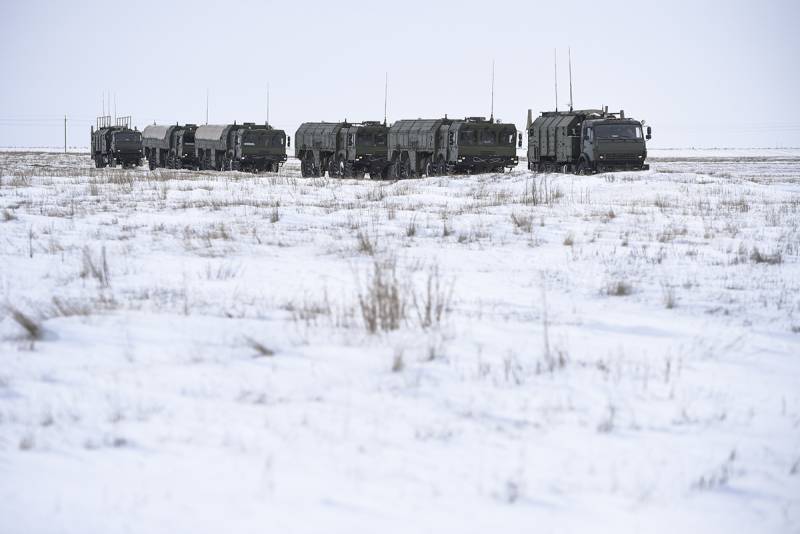
OTRK "Iskander" consists of six types of machines:
- Self-propelled launcher (SPU 9P78-1). Designed for storage, transportation, preparation and launch of two missiles on the target on the MZKT-7930 chassis. Calculation 3 people.
- Transport-loading vehicle (TZM) (9T250/9T250E). Designed to transport an additional two missiles and charge the launcher. Made on the MZKT-7930 chassis, equipped with a loading crane. Calculation 2 people.
- Command and staff vehicle (KShM 9S552). Designed to control the entire Iskander complex. It was made on the KamAZ-43101 wheeled chassis. Radio station R-168-100KA "Aqueduct". Calculation 4 people.
- Machine regulations and maintenance (MRTO). Designed to check the on-board equipment of missiles and instruments, to carry out current repairs. Made on a KamAZ wheeled chassis. Calculation 2 people.
- Information preparation point (PPI 9S920) on the KamAZ-43101 chassis. Designed to determine the coordinates of the target and prepare flight missions for missiles with their subsequent transfer to the SPU. PPI is interfaced with reconnaissance means and can receive tasks and assigned targets from all necessary sources, including from a satellite, aircraft or UAV. Calculation 2 people.
- Life support vehicle (MZhO) on the KamAZ-43118 chassis. It is intended for accommodation, rest and eating of combat crews.
Complex. Autonomous, able to move anywhere and wait in the wings there. And then there will be what we could already observe: the blow is inevitable and accurate.
Actually, everything, as predicted earlier, now sign for confirmation.
And that's not all.
Work continues within the walls of the Design Bureau of Mechanical Engineering. Now the modernized Iskander-M is being put into service, with a range of over 500 km. But to be continued.
Today is the 9M728 cruise missile of the Iskander-K complex.
A high-precision cruise missile, about which nothing really is known. The range of 9M728 in different sources ranges from 500 to 2500 km, and the part responsible for the accuracy of guidance is no different from the Iskander-M, which unequivocally classifies the missile as a high-precision weapon.

It is clear that the missile is subsonic, which will allow it to fly at low altitude when approaching the target, and the optical seeker, using the same guidance and analysis methods as the Iskander-M, will allow hitting targets no less effectively.
We will not go into the details of the classified performance characteristics, this is completely useless. It is also pointless for now to draw conclusions and speculate about certain strengths and weaknesses of the complex.
"Iskander" showed its importance by participating in a special operation in Ukraine. And now many issues have been removed from the agenda, because, having good air defense systems of the S-300PS type, the air defense of Ukraine could not oppose anything to the Iskanders, which in the first days clearly worked out at airfields and other objects of the military infrastructure of Ukraine.
Meanwhile, the Ukrainian "Tochki-U" Russian air defense systems are systematically shot down, with virtually no chance of success.
In the end, it is worth noting that at one time the United States had a very worthy Pershing complex, a two-stage rocket of which could fly 1800 km at a speed of about 8M.
After the ratification of the INF Treaty, the Pershings were withdrawn from service. And in the United States, they practically abandoned all work in this direction.
Maybe all the same in vain? However, we are more than satisfied with this arrangement.
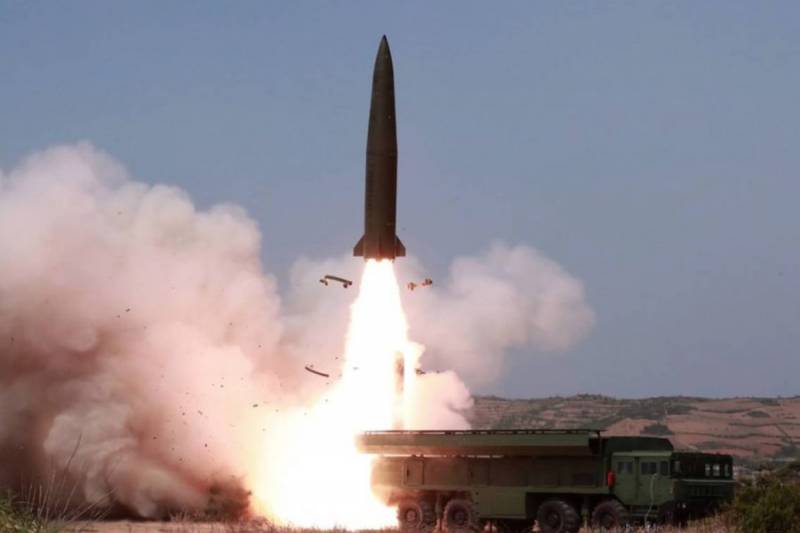
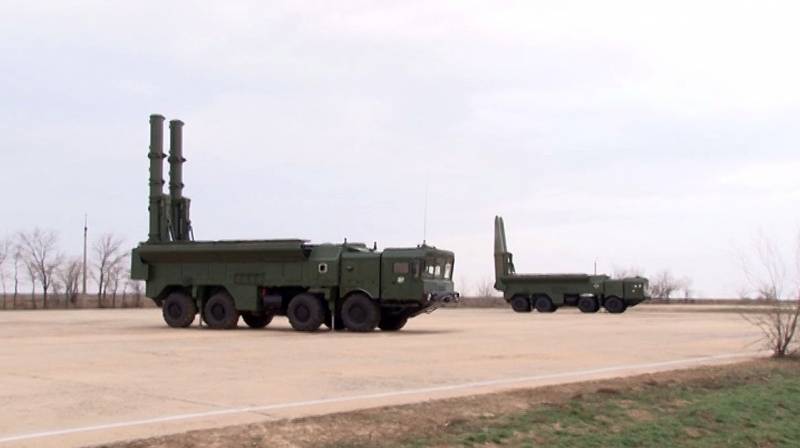
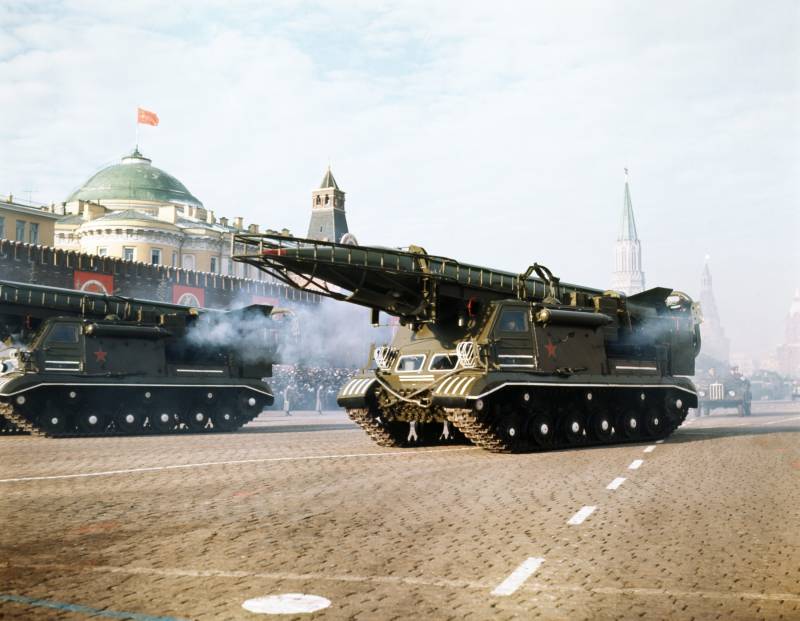
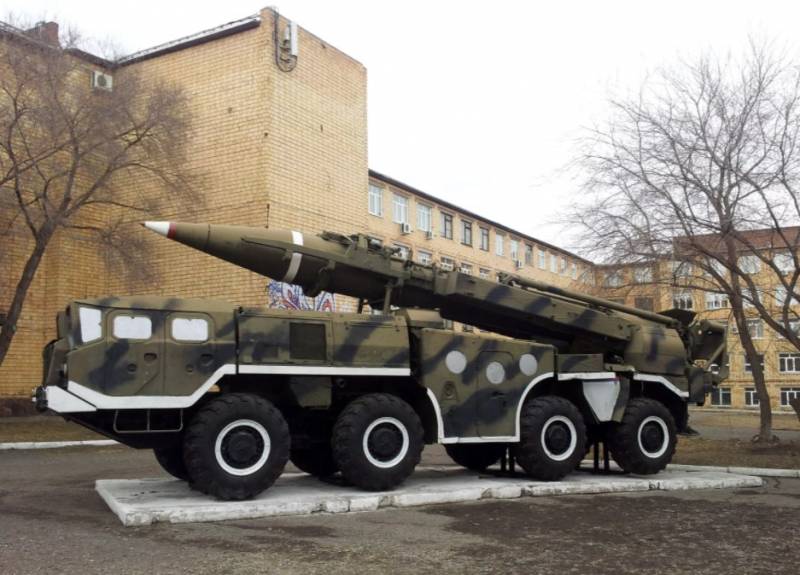
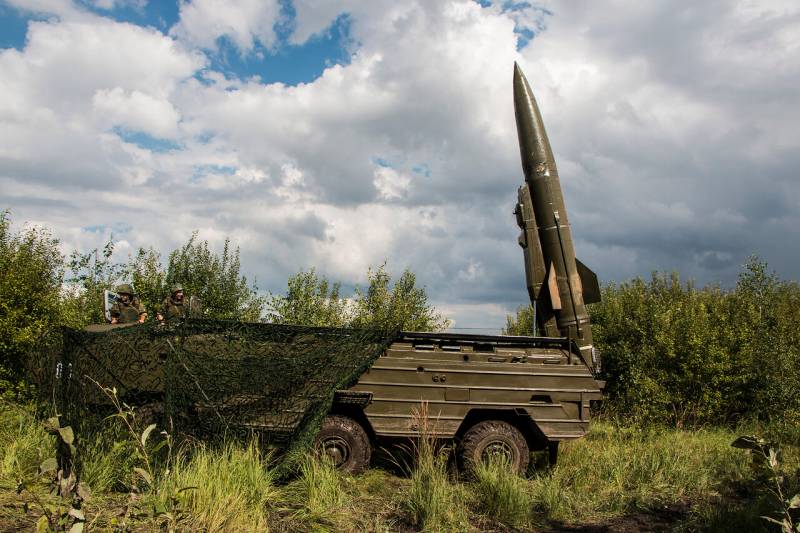
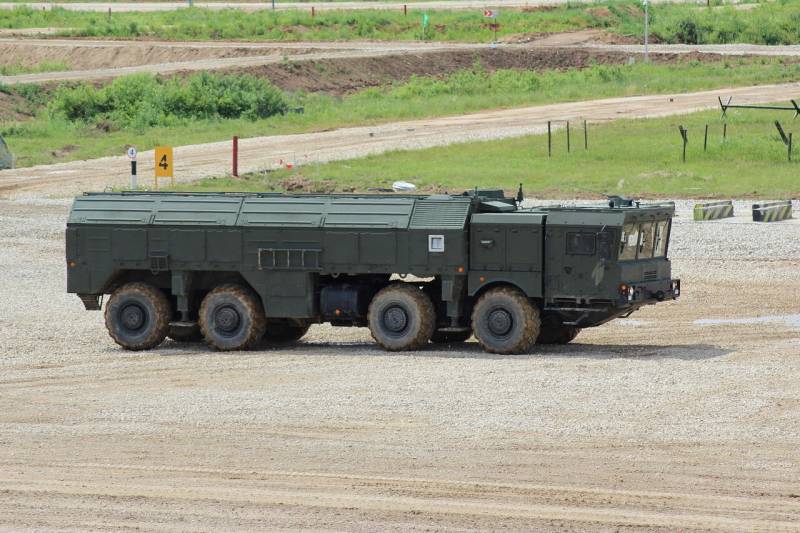
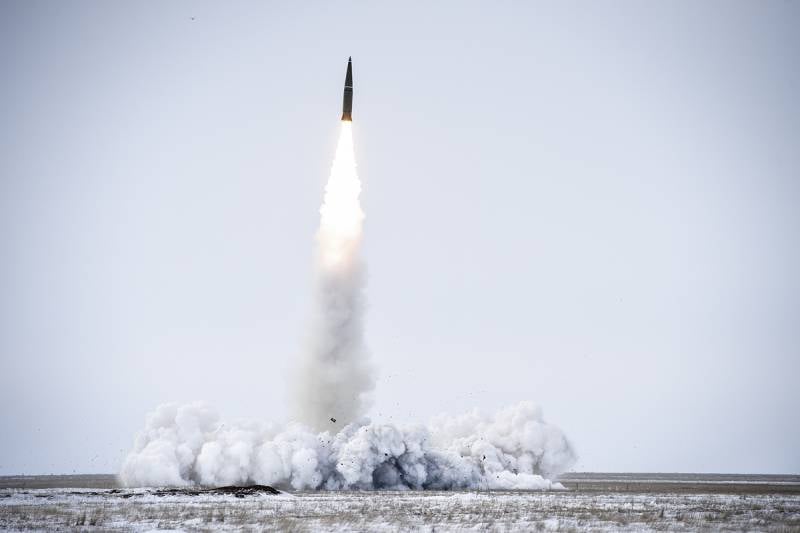
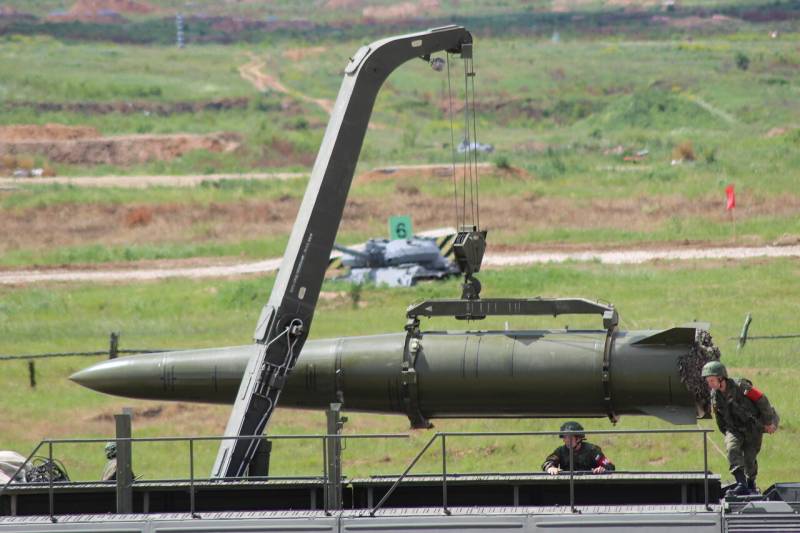
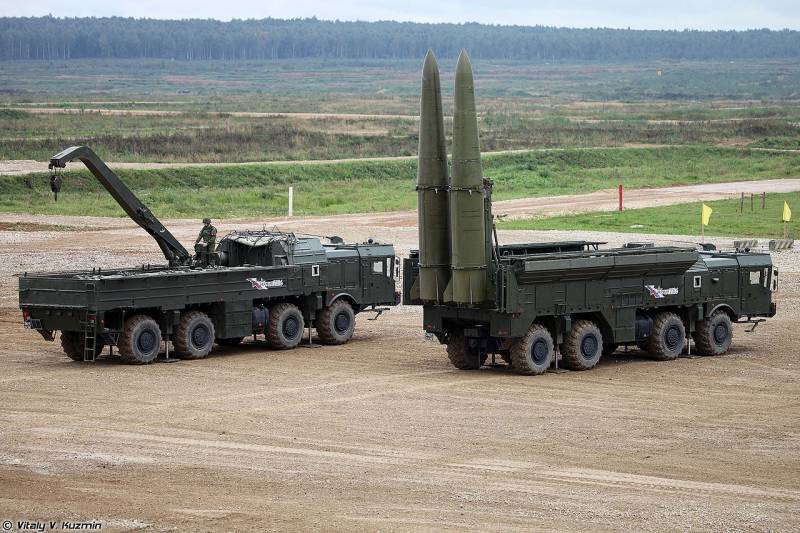
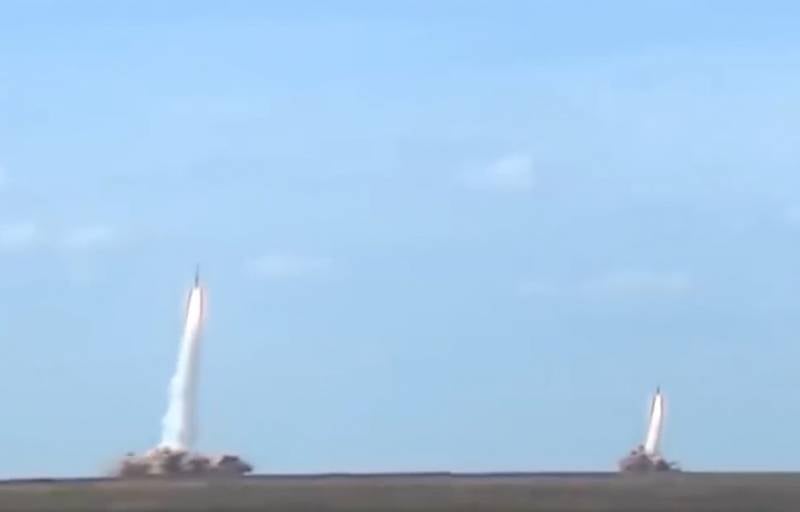
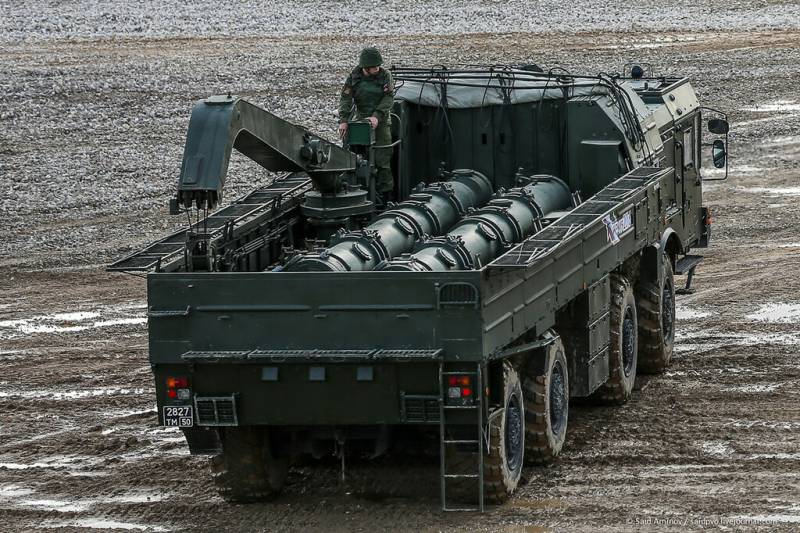
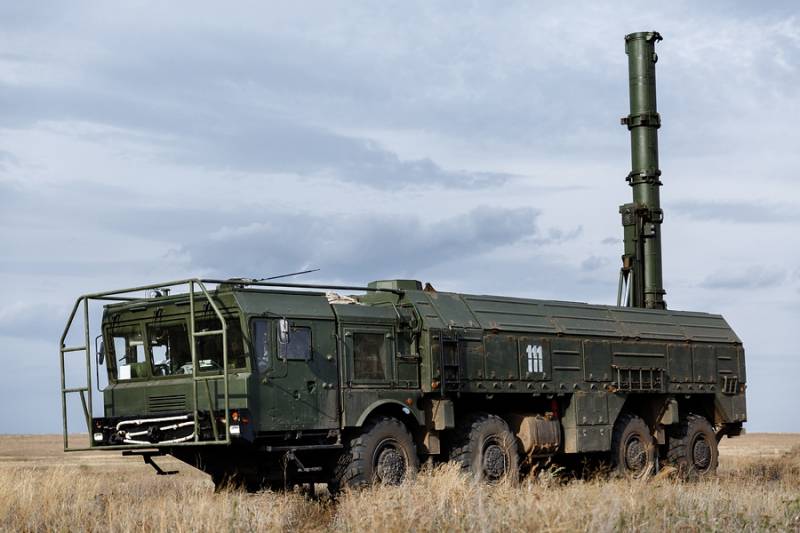
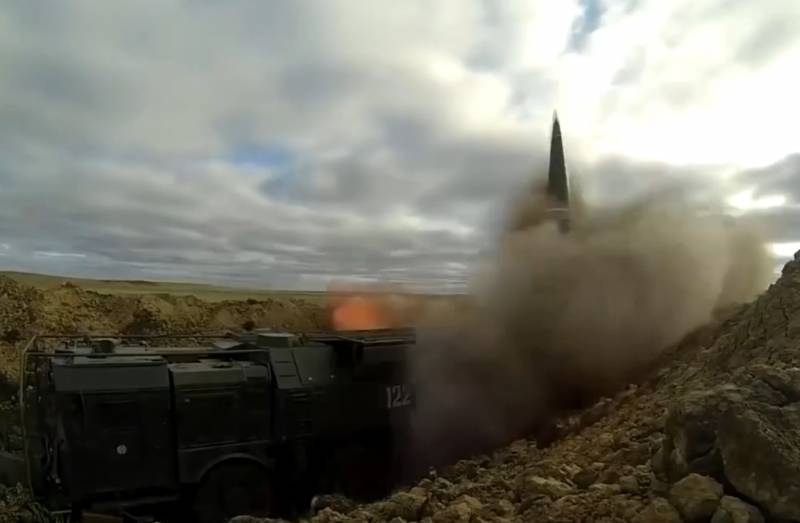
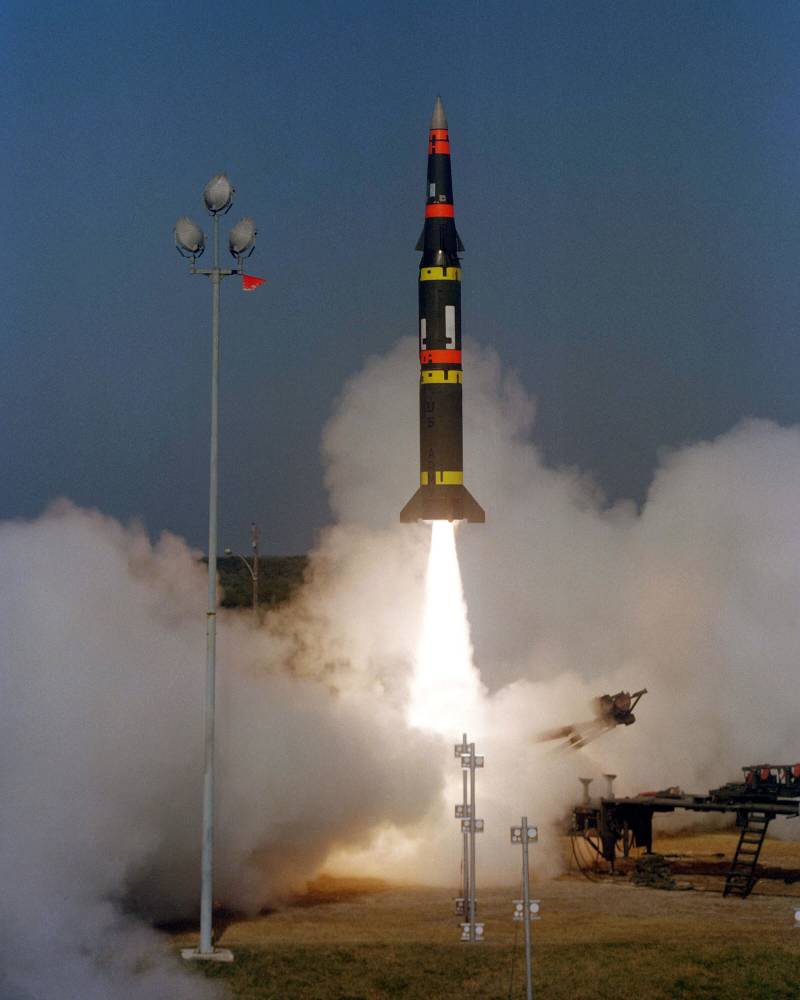
Information